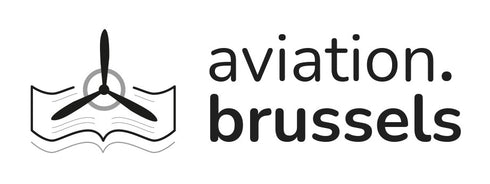THE TOWER & PREPARATION OF THE FIRE WORKS in the Park Augt 1st 1814 - Gravure -
Prix régulier 50,00 € TTC 6%
Balloon - Undated - Coloured engraving
This is a fine coloured engraving that shows some fireworks display and a hot - air balloon rising into the air ( Green park, London, August 1st, 1814 ).
Characteristics
| Special features | Presented under glass. Frame size ( 38 x 48 x 2.2 cm ). Dark beige mount ( outer edge : 33.7 x 43.6 cm - inner edge : 21.08 x 31 cm ). Advertising label on the back ( From John Gardner - PRINT SELLER - 34 Buckingham Gate - London S.W.1 - OLD PRINTS PURCHASED - Frames of All Descriptions ). |
| Size | 21.08 x 31 cm ( probably larger than that ) |
| Authors | John Heaviside Clark and Matthew Dubourg |
| Editor | Edward Orme |
Description
Gravure en couleur de Matthew Dubourg d'après une œuvre originale de John H. Clark montrant la forteresse de Green Park (Londres, Angleterre), transformée du Temple de la Discorde en Temple de la Concorde, en l'honneur des célébrations du Grand Jubilé du 1er août 1814. Le Prince Régent (et futur roi George IV, 1762 - 1830) a déclaré un Grand Jubilé pour célébrer la récente victoire sur Napoléon et le centenaire de la domination hanovrienne. Sir William Congreve (1772-1828) a conçu un mécanisme permettant la métamorphose, qui a été révélée momentanément au milieu d'un nuage de feux d'artifice. Pendant que le feu d'artifice se poursuivait, l'aéronaute anglais Windham Sadler (1796-1824) s'est élevé dans son ballon et a largué des faveurs et des programmes à la foule en bas.
Coloured engraving by Matthew Dubourg after an original work by John H. Clark showing the fortress in Green Park ( London, England ) which was transformed from the Temple of Discorde into the Temple of Concorde, in honour of the Grand Jubilee celebrations on August 1st, 1814. The Prince Regent ( and future King George IV, 1762 - 1830 ) declared a Grand Jubilee in celebration of the recent victory over Napoleon and a centenary of Hanoverian rule. Sir William Congreve ( 1772 - 1828 ) devised a mechanism to enable the metamorphosis, which was revealed momentarily amid a cloud of fireworks. Whilst the fireworks display continued, English aeronaut Windham Sadler ( 1796 - 1824 ) ascended in his balloon and dropped favors and programmes to the crowd below.
( sources : SCIENCE & SOCIETY - PICTURE LIBRARY PRINTS, Wikipedia )


